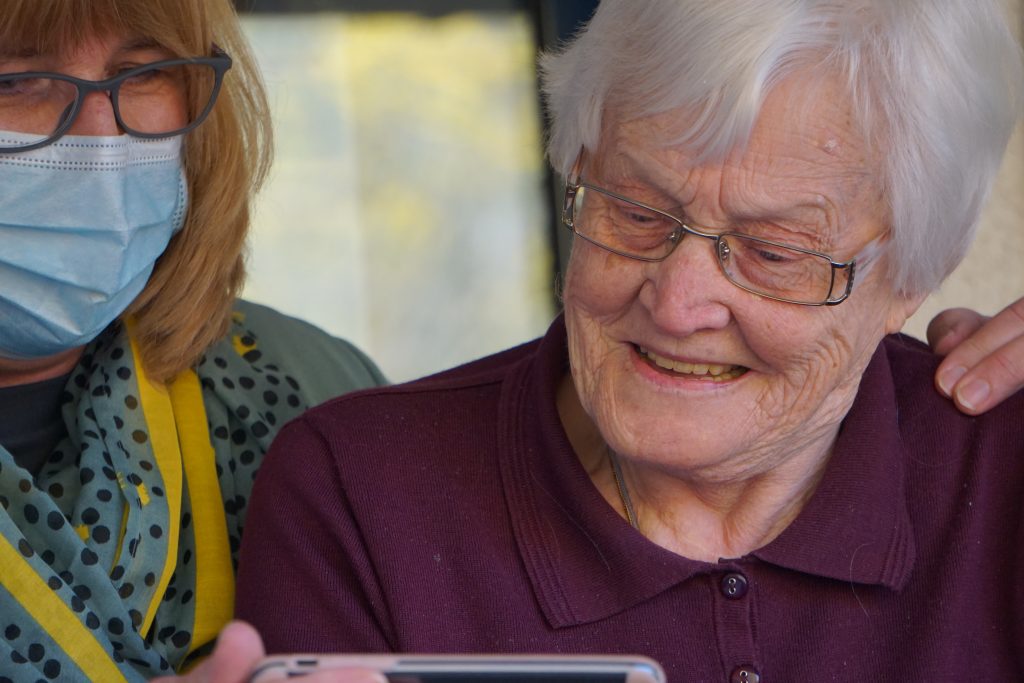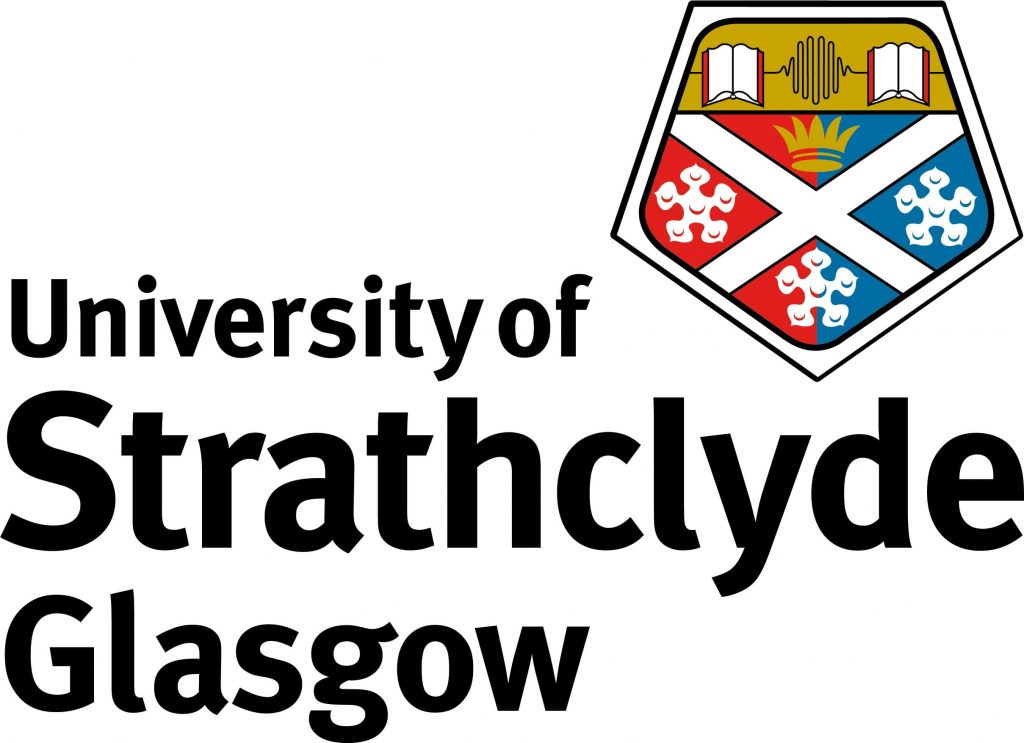Background and aims
Families with relatives in care homes have been separated during COVID-19: to protect lives, protect the NHS and reduce the spread of the virus. The UK Government initiated a national ‘lockdown’ on 23 March 2020. In Scotland, some care homes closed their doors as early as the 11 March.
Our research, carried out between May and October 2020, focuses on the impact of this on family carers with older relatives in Scottish care homes: the partners, husbands, wives, sons, daughters, close friends or family members with primary caring responsibilities. We conducted qualitative research with family carers, senior stakeholders and care home staff alongside a national survey of family carers’ experiences using the General Health Questionnaire (GHQ).
Our research reveals the changing roles that staff have played during the pandemic in supporting residents in life, and in death, when family members have been unable to be there. It highlights the creative and relationship-based practices that have made a positive difference, and the role of digital technology.
Drawing on the research, this report makes recommendations to reduce harm, reconnect families and recognise them as essential partners in care, and draws out lessons for the future. We hope it is informative to the Independent Adult Social Care Review, as Scotland considers the need for and shape of a National Care System ahead of 2021 elections.
Background
A matter of time
Visiting restrictions have been in place for nine months since lockdown began in March 2020.
The median time people live in a care home before dying is estimated to be 1.6 years.1
Thousands of care home residents have been deprived of contact with family members in their last weeks and months of life. Between 25 May and 6 Dec 2020, 6,374 residents have died in Scotland – only 785 of COVID-19 or suspected COVID-19.2
A matter of scale
There are around 36,000 adults in care homes in Scotland affected by visiting restrictions, with 90% being in care homes for older people.3
68% of residents are women with a median age of 84, 60% require care from a registered nurse and 49% have a diagnosis of dementia.
A matter of choice
Care home relatives and residents have not been afforded the same levels of discretion or decision-making powers that care homes, or other citizens have.
Key research findings
A matter of loss
Family carers in our study expressed:
- Loss and grief at being separated from their relatives
- Fears about the decline of their relative’s physical and mental health as a result of separation and isolation
- Fear they would not get back lost or remaining good days with them, and that ‘time was running out’
- Anxiety that their relative’s needs would go unmet without them being there to pick up on or voice concerns
- Missing regular contact with staff and being part of a community of care
- The loss of touch and sensory contact has been profound and upsetting for families.
A matter of distress
76% of family carers in our survey had a GHQ score of 12 or more, indicating a level of clinical mental distress. This is significantly higher than scores for the general public during the pandemic.
Our study shows family carers’ mental health has declined since visiting restrictions were introduced.
Support for policies
Just over half (51.4%) of care home relatives surveyed agreed ‘to some extent’ with government policies restricting visiting to care homes.
Support has waned over time as restrictions turned from weeks into months. Many felt that the psychological harm and faster deteriorations caused by long-term separation, outweighed the risks of the virus; and that the right to a family life had not been adequately weighted.
A matter of trust
Family carers who felt visiting restrictions were wrong were more likely to have lost trust in others (54.5% compared with 39.3% who supported or were neutral towards visiting policy).
Waning support for visiting restrictions coincided with the re-opening of parts of the economy, schools, colleges and universities.
Family carers expressed confusion and distrust around the rationale for policy decisions. They felt older people had been forgotten, and the re-opening of care homes was not a priority.
Those who felt well-informed by the care home about the health and wellbeing of their relative, were significantly more likely to support visiting restrictions.
A matter of status
The term ‘visitor’ (as used in ‘visiting restrictions’) is problematic, and considered an inaccurate description by relatives. It does not recognise the care they provide, nor the primary loving nature of their relationship to the care home resident.
Some family carers in our study advocated that family carers receive ‘key worker status’ – with this position backed by Care Home Relatives Scotland and other lobby groups.
Senior stakeholders recognised that the pandemic had shown how little society values older people.
Family carer’s views of care home staff
In the main, family carers expressed support and admiration for care home staff, recognising the stress they were under.
Prior trust in care home management, staffs’ track record in going ‘above and beyond’ for their relative mattered immensely, as did frequent and effective communication during restrictions. This helped reassure family carers that their relative was in the best place, while others questioned this.
Some family carers felt surveilled – for example during time-restricted garden visits – with this creating tension.
The experience of care home staff
Care home staff experienced increased workloads and exhaustion as a result of visiting restrictions.
Staff saw families’ fear of the virus turn to frustration, with family carers ‘pushing boundaries’ and challenging restrictions, with staff required to manage these tensions.
Some staff spoke about becoming an ‘extension of the family’ – facilitating final conversations between family members and holding the hands of resident as they died – occupying private spaces that they once would not.
Staff expressed how a greater appreciation of everyone’s assets had led to more agile and better team working, as well as a flattening of hierarchies. Staff felt empowered to be creative and talked about feeling more valued. It accelerated learning.
Technology’s role
Digital technology has played a considerable role during visiting restrictions, with video calls connecting family members, helping build relationships between staff and family carers, and providing online community spaces to provide ‘windows into care homes’ or peer support for family carers.
However, technology is not a panacea, and needs to be ‘right’ for individual residents and families, and able to be supported by staff with necessary training. Policies need to address digital exclusion.
Conclusions & recommendations
Older people in care homes and their families have suffered disproportionately during the pandemic. It is likely that the effects of this will be felt for years, especially in cases where a relative has died. Many family carers felt that the human right to a family life had not been adequately balanced against the risks of infection, especially when restrictions turned from weeks into months.
Care home relatives and residents have not been afforded the same levels of discretion or decision-making powers that either care homes, or other citizens have.
National Guidance has been difficult to follow and implement consistently, equitably and proportionately across the care home sector. There are many reasons for this. However, decisions need to be transparent and explained, not to further damage trust.
This study has highlighted how little we value older people in society, and the need for policies to give more attention to equality of impact on marginalised groups. Family carers do not get the recognition they deserve – with low status associated with female and caring roles. This is also true for waged care staff.
Most family carers expressed support and admiration for care home staff. Staff have experienced increased workloads, managed tensions and boundaries around visiting, and found new ways to maintain connection and communication to support families. They have stepped into different roles as ‘extended family’ members, and provided examples of agile and creative team working and initiative. However, care home staff cannot replace a resident’s own family.
Key recommendations
- There is a need for greater stakeholder involvement in shaping policy involving relatives, carers’ organisations and care home providers, with emphasis on coproduction.
- The contribution and status of family carers needs to be elevated, with them recognised by everyone as true partners in care and not ‘visitors’; policymakers awarding them ‘key worker status’ as family carer advocacy groups are calling for, would achieve that.
- We need to elevate care worker’s status and seriously invest in jobs, careers and training, with a focus on relationship-based practice, and promotion of learning, creativity and leadership at all levels.
- Peer support provided by family carers has been a powerful force during the pandemic – both as a tool for advocacy and for practical and emotional support. Care homes should consider the role they can play in facilitating communities of support.
- There needs to be focus on a human rights-based approaches, which address ageism along with discrimination experienced by other marginalised and minority groups. Inequalities will be exacerbated in times of crisis, and we need to be better prepared for the future. Policymakers should adopt the PANEL principles supported by the Scottish Human Rights Commission.
- Policymakers need to acknowledge the pain and loss experienced by families of care home residents, and the disproportionate impact on them to help rebuild trust.
- These recommendations are offered as a way to ‘build back better’ and learn from the experiences of the pandemic.
More about the study
The study adopted a mixed method design.
Between May and October 2020 we conducted 36 in-depth interviews with family carers to understand the impact on them being prevented from visiting their relatives in care homes. Our café style interviews involved five sessions with staff drawn from four separate care homes and explored creative practices used to connect residents with family carers. To help understand measures taken to reduce the impact on family members, we undertook 19 interviews with key stakeholders from the health and social care sector. Finally, using the General Health Questionnaire (GHQ 12), we conducted an online survey of people who had a loved one in a care home, which yielded 444 responses, representing 31 of Scotland’s 32 local authorities.
Further information about our work
Read the full-length publication from which this summary is derived.
Footnotes
- Burton K, Lynch E, Love S, Rintoul J, Starr JM and Shenkin SD (2019) Who lives in Scotland’s care homes? J R Coll Physicians Edinb 2019; 49: 12–22 | doi: 10.4997/JRCPE.2019.103
- Scottish Government (2020) Coronavirus (COVID-19): adult care homes – additional data [accessed 3/12/2020]
- ISD Scotland (2018) Care home census for adults in Scotland
PDF download








